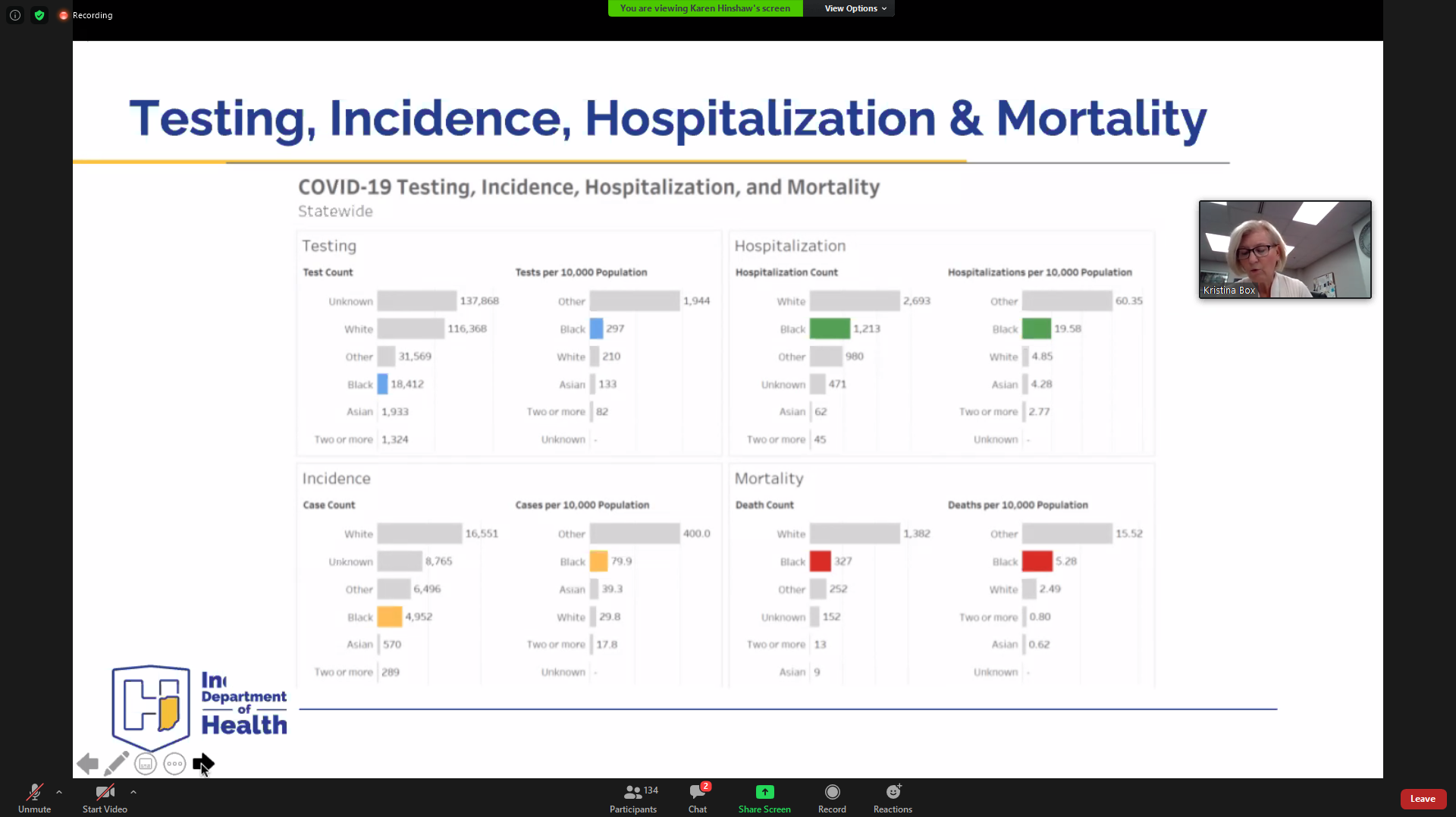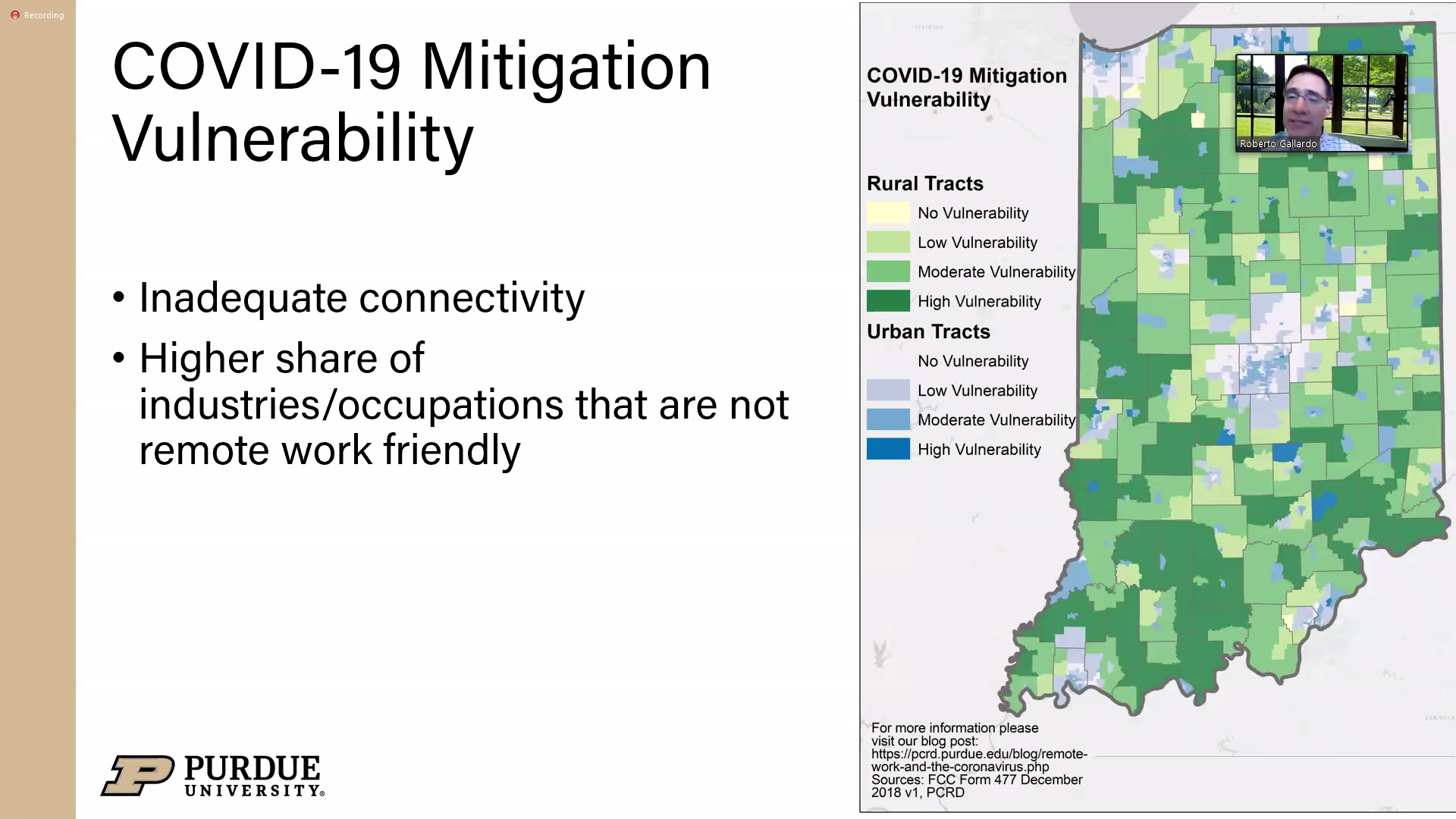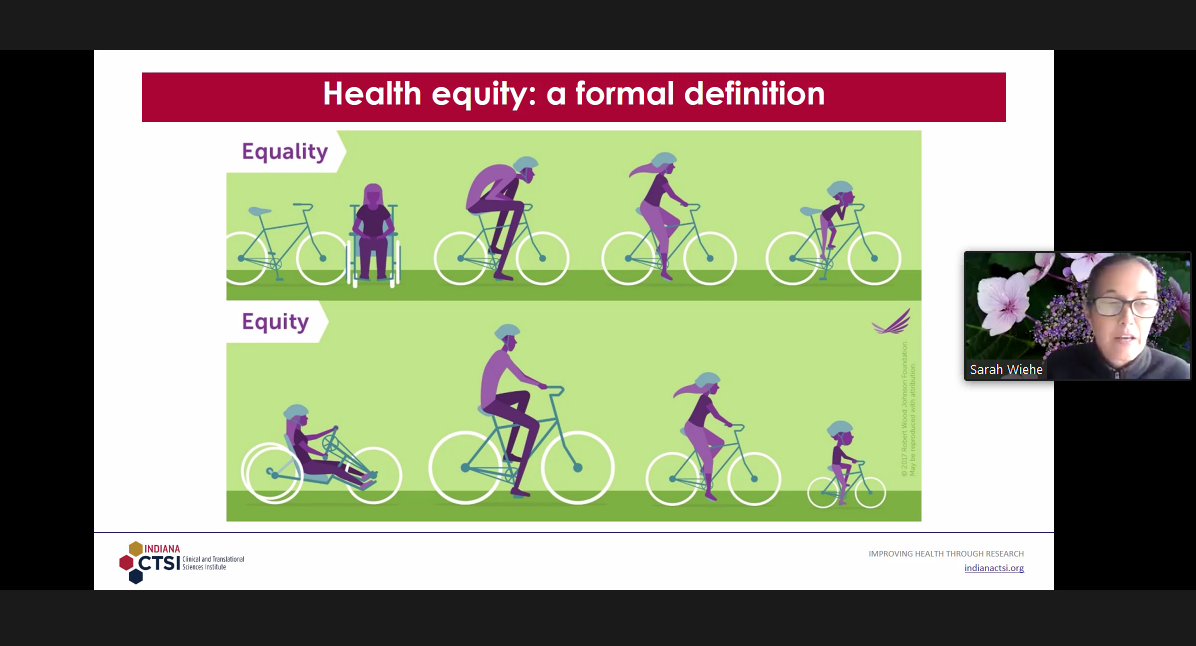The Connections IN Health annual event took place on October 1, with the theme of “Leveraging Connections to Address Health Equity.” About 130 people attended the virtual event.
According to the Centers for Disease Control and Prevention, health equity is achieved when every person has the opportunity to “attain his or her full health potential” and no one is “disadvantaged from achieving this potential because of social position or other socially determined circumstances.” Health inequities are reflected in differences in length of life; quality of life; rates of disease, disability, and death; severity of disease; and access to treatment.
Indiana State Health Commissioner Kristina Box, MD, was the first speaker during the event, addressing COVID-19 and health equity in the state. She talked about how she and other state leaders were worried about the novel coronavirus from the beginning because so many people in Indiana have underlying comorbidities, such as obesity, diabetes and heart disease. Box said they developed strategies around testing minority communities for the virus, to make sure their resources could be utilized for those who needed it most.
“The deaths for our Black population are much higher than the percentage for our other populations,” said Box. “Our breakdowns did not include the Latino community, because ethnicity is even harder to get people to mark [on their health information] than race.”

Introduction to Connections IN Health event

Kristina Box, MD, addresses COVID-19 and health equity in the state
Box also talked about the state’s growing COVID-19 testing capacity, since they started with a few testing locations and now have more than 250 sites across Indiana. She also talked about ways the state has been helping people experiencing homelessness deal with the pandemic through Safe Recovery Sites, making sure they would be fed, had a place to stay and could get the medical attention they needed. These sites have served more than 1,000 people experiencing homelessness in the state. Box also expressed her gratitude for local partners, including WISE Indiana, which is a partnership between the Indiana Clinical and Translational Sciences Institute (CTSI) Monon Collaborative and Indiana Family and Social Services Administration.
“We’ve been incredibly blessed to have the team of researchers at WISE Indiana supporting our COVID-19 response to help us make public health and policy decisions based on the most recent evidence-based information,” said Box. “We will continue to reach out to our partners and stakeholders across the state to ensure that every Hoosier has the information and resources needed to reduce their risk of contracting COVID-19.”
Box explained that it can be difficult to solve underlying health disparities during a pandemic, but as we go forward, it’s important to try to continue addressing inequities in our state.
Roberto Gallardo, PhD, who is the director of the Purdue Center for Regional Development also addressed the virtual audience, sharing his message about digital inclusion in Indiana. He talked about how having inadequate Internet connectivity can contribute to difficulties with working remotely, as well as e-learning. Gallardo said one of the biggest obstacles when it comes to the state’s digital divide is a lack of awareness. A “digital divide” is defined by the economic, educational, and social inequalities between those who have computers and online access and those who do not.
“People don’t know what they don’t know,” said Gallardo. “If you can bang the drum constantly on the digital inclusion component and how that’s tied to quality of life, it can make an impact. Even though some communities know they have a problem, they aren’t able to solve the problem, so that’s where we can come in and help.”
Dr. Sarah Wiehe, MD, MPH, one of the Indiana CTSI Co-Directors, was the final speaker, as she added her perspective about how the Indiana CTSI is addressing health equity. She explained that while health equity is important, she hopes the Indiana CTSI can help bring about the next level of change: health justice. Health justice can be accomplished when systemic barriers are removed and the causes of inequity are addressed, so everyone can get the support they need. She also left the participants with a call to action.
“What can each of us do individually to change the landscape of health equity in Indiana?” said Dr. Wiehe, who is also the associate dean for community and translational research at IU School of Medicine. “More importantly, what can we do collectively? Be the change you want to see in the world. Think big and pledge to make a difference.”

Roberto Gallardo, PhD, talks about digital inclusion and disparities

Dr. Sarah Wiehe, MD, MPH, explains health equality and health equity
